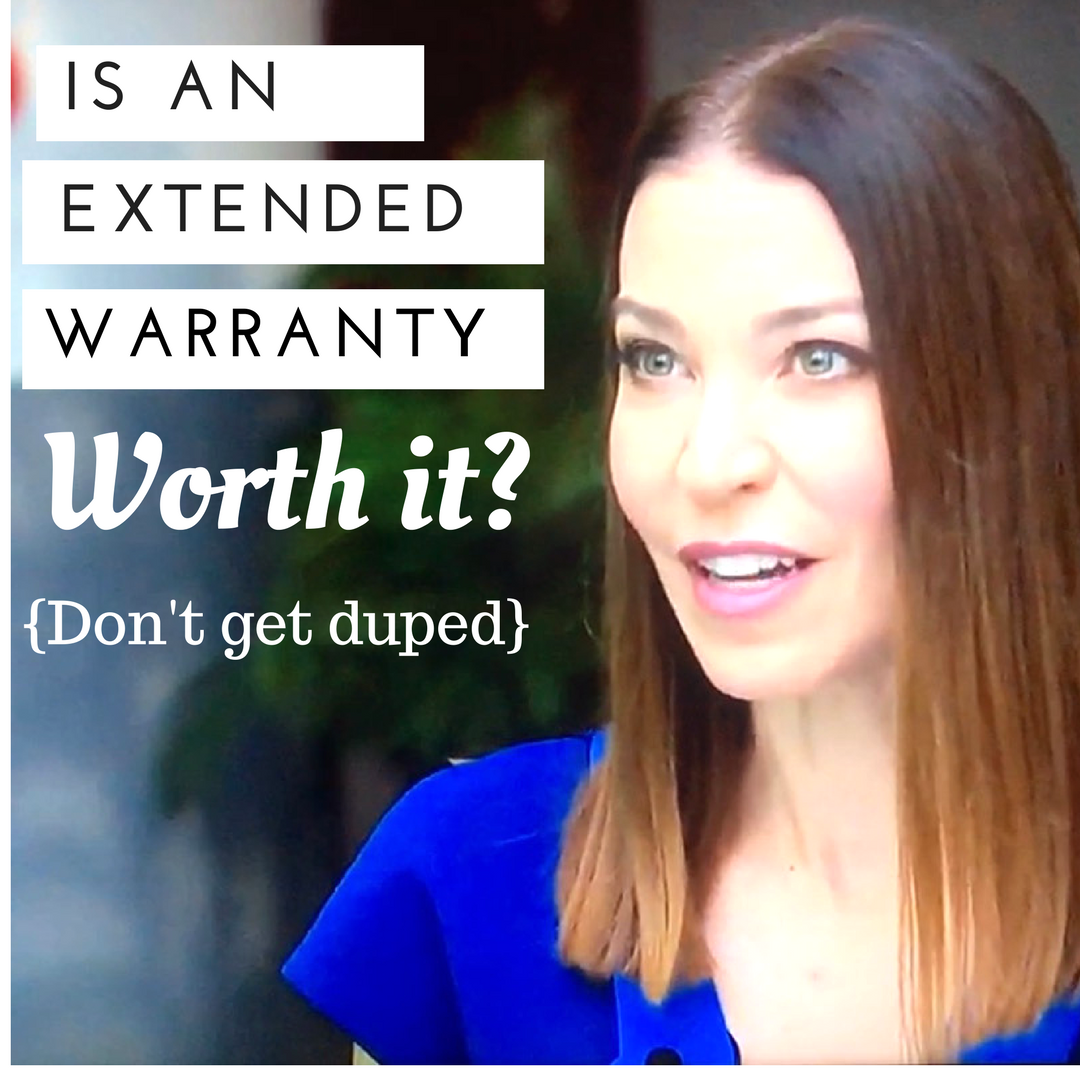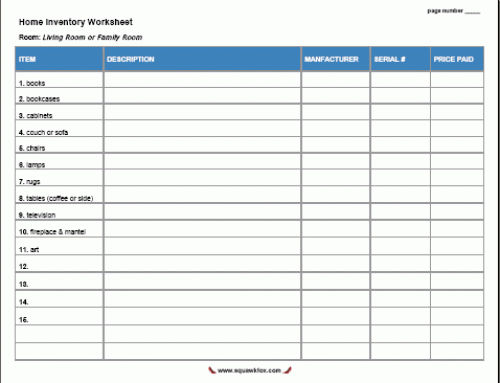It never fails. You’re about to hit the checkout with a tasty new piece of tech (maybe a television) or a needed household appliance (perhaps a washing machine) and the cashier offers to sell you an extended warranty.
Since no one goes to a cashier to buy an extended warranty you feel kinda awkward and a wee bit under pressure. What kind of person buys a shiny new thing and doesn’t want to protect it?
“What if the screen goes kaput? Or some hardware fizzles? Or you find a dead pixel?” Cries.
Listening to the cashier’s extended warranty spiel, you already foresee several total television destruction scenarios, but the darn thing hasn’t even been unboxed yet! That’s enough to forget that on a $1,499 television the extended warranty costs just $299 — that’s 20% of the total purchase price. Yes. Twenty. Per cent.
More pressure. This time not from the cashier, but from your brain. It’s a bit of a drain, really. Should you get the extended warranty? Game of Thrones only looks awesome on an unbusted TV, BTW.
I did an interview with senior business reporter Jacqueline Hansen for CBC’s The National on the business of selling warranties.
I have a few rules of thumb when it comes to extended warranties so you’re not stuck in checkout debating insurance for your tech.
The Problem(s) with Extended Warranties
An extended warranty is generally an insurance policy. They often contain fine print clauses that can make it easy to deny coverage and may not cover common scenarios that damage tech, like dropping. In addition to a deductible, extended warranties may also charge a fee to make a claim which may eclipse the price paid for the policy.
Few people make claims through extended warranties, so these policies are a very profitable product for retailers as they add an additional 10% to 20% to the purchase price.
A 2015 U.S. study, Risk Preferences and Demand Drivers of Extended Warranties, shows the marketing and behavioural science behind why consumers buy these policies even when they are a bad deal. The study concludes people are struggling with loss aversion, a tendency to prefer avoiding losses to acquiring equivalent gains. Basically, it feels better to not lose $5 than to find $5. So it feels totally terrible to need a $50 cellphone fix and not so bad to pay $150 for an extended warranty to cover it.
But here’s the thing, new gadgets and appliances should all come with a manufacturer’s warranty which supersedes an extended warranty offered through a retailer. When tech breaks or goes bust, it generally happens in the first year of product ownership and the manufacturer should cover many issues and out-of-warranty recalls.
And then there’s the buyer’s protection offered through many credit cards.
Are you already covered? Check your credit card!
Check the benefits offered through your credit card before buying an extended warranty. Many credit cards offer a purchase protection plan that can double the warranty you get from a manufacturer, for up to one year, when you charge the full price on the card. If an extended warranty is important to you, shop around and compare credit cards benefits first — it may be less expensive to pay an annual card fee than to purchase the retailer’s extended warranty.
Before you buy an extended warranty
Don’t ever feel pressured to purchase a plan at checkout. Asking a few questions and doing a bit of research often pays off when buying insurance products.
- Ask what’s covered and who administers the warranty. Is the insurance company easy to deal with or are there legions of customers lodging complains online? Before buying always ask for a contract copy or read the terms of the warranty online.
- When does the extended warranty coverage kick in? Does it start with your purchase? You may find the retailer’s warranty overlaps with the manufacturer’s warranty in the first year. Two policies covering your tech in year one does little to help you in year two if something goes kaput.
- Research the current purchase price of the product and estimate the future cost to replace it — tricky, I know. An extended warranty can be worthwhile on an expensive item you hope to keep for a long time. It makes less sense for low-cost items, when the technology is changing quickly and the replacement cost can drop significantly after a few years.
Kerry’s Advice: Skip the extended warranty.
Here’s the plan when your tech goes kaput.
Step One: If the product breaks in the FIRST year, contact the manufacturer and use your manufacturer’s warranty. A manufacturer’s warranty is designed to cover the biggest issues at the earliest possible time. Even if you’re out of warranty the manufacturer may still help you if the issue is known or is part of a product recall.
Step Two: If the product breaks in the SECOND year, go through your credit card’s product protection plan. Many credit cards add one extra year of coverage to a manufacturer’s warranty. Call your credit card issuer as soon as your item breaks. Use purchase receipts and follow your issuer’s instructions to make a claim. Depending on the authorized repair centre and your claim package, it may take a while to get your money. Follow up and be patient.
Step Three: Fix the broken thing yourself. Wear and tear is normal on furniture, clothing, and sports gear too. When I wore out my loved Fluevog blue boots, guess what? I got my kickers fixed (well, re-soled) all without an extended warranty. In Repair or replace: When does it make sense to mend the threads you’ve got? I outline the rules for getting stuff fixed on budget.
So whether your tech lives la vida loca or fizzles out over time, paying out of pocket to repair or replace your gear is just a part of life. No extended warranty needed.
Love love love,
Kerry



Good advice. I have NEVER bought extended warranty and have never had a case that I wished I had.
The one and only thing I purchase an extended warranty for is my Lenovo laptops (or any laptop). I get them for as long as they’ll sell them to me and have made several claims over the years–for hard drives, keyboards, etc. The extension is just that–an extension of the original one-year warranty. I keep my computers going for 7-8 years and have found that one kind of warranty worthwhile. My computer guru recommended it and it’s paid off for me.
Any other extended warranty is a no-go for me, for the reasons you so eloquently describe.
(Great picture, by the way!)
The only thing I’ve bought an extended for was my current gas stove. I had issues with the one before it but this was a floor model and I saved enough that way to cover delivery and the extended with some left to pay for the gas hook up. The ignitor crapped out a month or so before the extend did and I got it replaced no charge.
I agree with you. We have an emergency fund. That is the extended warrantee for everything we buy.
Lifetime warrantees are a joke too. Companies go out of business. I experienced this recently with the window tint in my pickup truck. From now on when I am buying something with a “lifetime guarantee” I am going to ask for the price without it.
This is great advice. Only in very rare occasions do extended warranties make sense. There is certainly a sweet-spot for when this pays off, but seems unlikely to make sense. Even if you do, how much of your time will you spend on the process.
Also, it feels like suck a money grab by large corporations to push these on small items. Example, I’ll be in line at Wal-Mart, and the person in front of me buys a $13 toaster, and is now being asked if they want a $7 two-year warranty. Really? I mean, come on.
The only item that could make sense are very expensive cell phones. I see your 2015 study, but what do you think now? Being that they are $800 or so, would you consider a policy worth it? I’m on the fence. Cheers. Tom
Hi Tom, I’m doing a story on cell phones and AppleCare+. I’ll comment again when it’s up. 🙂
I never fell for this, especially since in my country, regular warranty is usually not well supported. Am not gonna pay extra for something that’s not gonna get fixed anyway 😀
I too, have never bought extended warranty, and have never been sorry that I did not. It is always tempting, especially when buying expensive electronic equipment, but I consider extended warranties to be a losing gamble.
I must say the extended warranty is just a extra expense that can be avoided but if your not a risk taker the warranty might be the right way to go
I try to make my own “extended warranty” and “random ABC insurance” policies.
By this, I mean that I always have thousands of dollars in my emergency fund in case something breaks. Of course, I always try to get it repaired, but if not, it’s not a big deal to me to go buy a new fridge, or computer, or even used car.
The power of money in the bank!
Extended warranties are almost never worth it – for any product. Your best option is just save and invest, repeatedly, a lot, for a long time.
Never ever ever ever buy extended warranties – simples. It’s virtually always a rip off. If you’re genuinely concerned then as suggested above set your money aside for a just in case fund. But generally – don’t purchase the extended warranty!